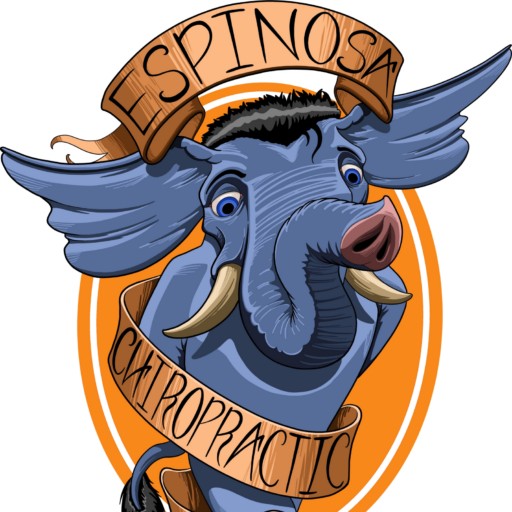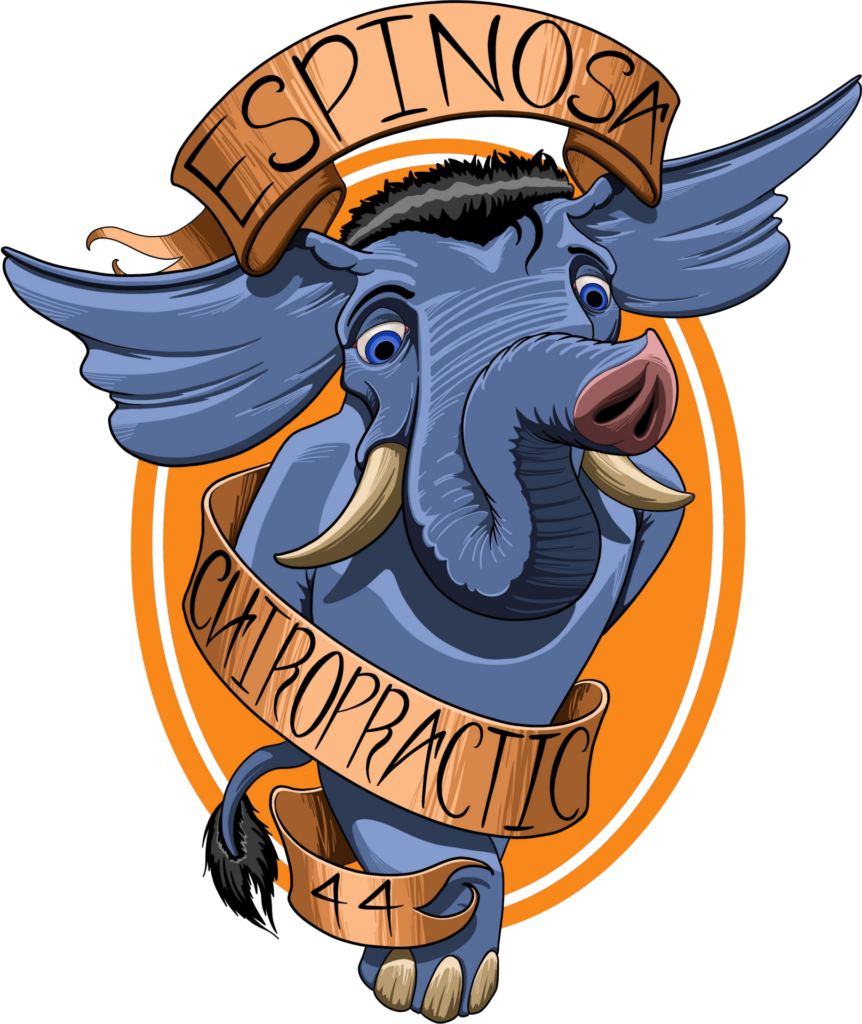Archive for June 2016
Avoiding Pain in the Garden

Gardening season is in full swing: with temperatures and spirits high, more people leave their winter skin on the couch so they can get growing. Gardening and chiropractic are complimentary: gardening is exactly the type of activity that gets people off the couch, to the benefit of their mind, body and soul. However, some of the motions involved can put strain on the back, especially if there is a pre-existing subluxation. At Espinosa Family Chiropractic, we offer prevention and treatment modalities that keep you in a state of enjoying gardening without the hassle of pain.
Avoid aches and pains this gardening season by following these easy tips:
Warm up: Stretching for less that 5 minutes before you get down and garden can keep your body limbered and strong against the kind of twisting, bending and dipping motions that are most frequent while gardening.
Take breaks and drink water: Step back and enjoy the fruits of your labor while having a gulp of water or two. Make sure you are replacing the water that you shed so you don’t end up feeling exhausted and headache-y at the end of the day. Keeping properly hydrated makes all the functioning systems of your body work more efficiently.
Avoid twisting unnecessarily: Keep your spade in front of you, to avoid twisting behind you to reach it.
Lift properly: large loads are sometimes unavoidable in the garden, so make sure that you observe proper lifting etiquette by lifting with your legs and whole body as opposed to bending and lifting with the back.
Mix up your tasks: Remaining hunched over on your knees for a long period of time encourages muscles to tighten and strain to occur. If you can, mix it up by doing small tasks and moving from patch to patch of your garden to keep muscles limber.
If your back is not letting you enjoy gardening the way you used to, give our office in Sacramento a call. We can identify and correct misalignment, and speed the healing process of damaged tissues and strained ligaments.
Dr. Raymond Espinosa, D.C.
Tips for the Regular Driver

There is a high correlation between people who commute regularly or drive for a living and those who have spinal disorders. This is because the driver’s seat is not the best place for backs: very rarely are car seats engineered with a proper resting position in mind, and if they are, it may not be properly adjusted to the individual. So we must take a proactive approach to protecting our musculoskeletal integrity when driving regularly. Here are some ways you can make your daily commute more conducive to a healthy back:
- Lumbar support: whether it is built-in or whether you must add it in, using something that promotes the natural curvature of your spine will save you from the problem of slumping or slouching.
- This being said, you must still take frequent breaks, depending on the length of the journey. Even sitting with perfect posture without moving for hours leaves you stiff and sore. Make sure you are hydrating regularly, and take breaks to breathe in the scenery.
- Head positioning is very important. While you should always have your eyes on the road, make sure you are not craning your neck forward, amplifying the weight of your head to the spine and muscles in the neck and shoulders. Try to keep it centered above the spine with the chin slightly tucked.
Don’t let driving put a drag on your spinal health. If your back feels sore or out of sorts no matter what kind of good things you are doing for it, there may be an underlying spinal condition that needs evaluation. At our office in Sacramento, we provide you with adjustments to keep your spine in alignment and slowing the advance of degenerative decay. Find out how our form of corrective chiropractic can optimize your well being by calling our office today.
Dr. Raymond Espinosa, D.C.
Sinus Headaches

Sinuses play a larger role in our lives than they are often given credit for. Like many functioning parts of the body, we don’t pay them attention until they give us grief. Sinuses are located throughout the head: in the cheeks, the nose and the forehead. They are air-filled sacs or cavities that drain mucous from the nasal passageways: so, when they get blocked up, mucous builds creating a veritable breeding ground for bacteria that can lead to infection.
The kind of congestion associated with sinus problems often leads to headaches, with presenting symptoms of pressure in the sinus regions, feelings of stuffiness and full ears that feel likely to pop. They are usually worse in the morning, after you have spent the night lying down, giving them even less chance to drain.
So, how does this relate to chiropractic? Often, misalignment of the cervical vertebrae can interfere with the nerve communication to the sinuses. We correct any presenting subluxation and employ other methods like localized tapping to encourage the sinuses to drain.
Anyone who has lived with chronic sinusitis knows how much of thorn it can put in their side. Along with chiropractic treatment, we encourage people to get moving, as exercise helps to improve circulation and clear out the sinuses further. Dietary considerations include consuming ingredients that contain anti-inflammatory properties and staying fully hydrated.
Dr. Raymond Espinosa, D.C.
Strengthening and Stretching

Strengthening and stretching: the immortal S’s that will help you overcome back pain once and for all. Whether you are suffering acute back pain from a traumatic injury, or more generalized pain that has accrued from repetitive stress, the back can benefit from these exercises done on a daily basis. DO NOT undertake any stretch, exercise or movement that exacerbates your pain to even the slightest degree. Your best bet before starting any exercise routine is to confer face-to-face at our office in Sacramento.
Bridging
- Lay supine with knees bent, hip-width apart.
- Raise hips slowly until a straight line is achieved between knees and chest.
- Hold bridge for 5-10 seconds and slowly return to ground.
- Repeat 5 times
- Do not be discouraged if you cannot achieve the bridge at first. Many people need a few days to work their way up to it.
Wall squatting
- Stand against wall with feet in front of body by about 12 inches.
- Keep back straight, flex stomach muscles and lower body into a squat.
- Squat as far as you can, with the intention of your thighs being parallel to the ground.
- Hold 5 seconds then reverse the motion.
- Repeat 10 times
At Espinosa Family Chiropractic, we love seeing people live pain free lives. It is a privilege of our job that we can help in this endeavor. For help creating a routine that incorporates stretching and exercise that strengthen the structurs and muscles of the back, give our office a call today.
Dr. Raymond Espinosa, D.C.
Using your Core for Stability

How much benefit are you actually reaping from your daily crunches? The lumbar region of the back is the main support for your entire body: it makes sense that keeping the surrounding musculature strong and healthy will boost the spine’s longevity. The core is a complex series of muscle groups that plays a role in almost every aspect of human movement, no more so than in the mechanics of the back. The core is used for stability and force transfer across the body, and force production is actually a tertiary function. This leaves me asking why so many people focus on crunches as the sole method to improve core health?
Core stability is the ability of the muscles to control the force we produce and therefore, a stable, strong core will be the one that inoculates us against injury. Core stability movements such as planking, side planking and deadlifting are a better metric for core strength than the number of crunches you can perform.
For those looking to improve their core muscles to make an impact on the overall health of their back, including the prevention of injury, a calculated approach must be applied. This is where we can help at Espinosa Family Chiropractic: we can put together a plan that develops the core as a stabilizer rather than a force producer, thereby increasing the longevity of your spine.
Dr. Raymond Espinosa, D.C.
Driving Posture

Don’t take for granted the number of minutes you spend commuting on a weekly basis. The minutes add up quick and very few cars are equipped to support or even encourage a neutral sitting position for the spine. Many people can recall the feeling of being stiff and sore from a road trip. This feeling is an outcry from muscles which have accumulated tension from lack of movement during the drive. Your intervertebral discs have absorbed fluid during this time, further limiting your range of motion. We often take the rest stop exit to relieve our bladders, but rarely to give our muscles and spine the attention they deserve. Driving truly is a rigorous undertaking for the back; at Espinosa Family Chiropractic we encourage you to help out in any way you can by using posture.
Sitting up straight is the best way to begin: with your butt back in the seat and your head balanced above your spine, the rest of the body will follow suit. Do you ever find yourself leaning on the center console? Now is the time to stop, as this encourages a muscular imbalance that will compound over the long drive. Holding the steering wheel at 9 and 3 is good, but are your shoulders relaxed? It might be appropriate to adjust the height of your seat or steering wheel (if possible). Finally, car seats are not conducive to supporting the lordotic curve. Use a small pillow or rolled up jacket to give your back a boost and see how it immediately makes you feel better.
At our office in Sacramento, we are keen on showing people how the little things add up. Just as poor posture can defeat your well-being, so can proper posture change the way you feel at the end of a long drive for the better. For a whole range of holistic lifestyle adjustments and counseling, call our office in Sacramento at (916) 457-8825.
Dr. Raymond Espinosa, D.C.
Posture on the Job

The term desk-bound describes how a significant portion of people spend their 8 hour working days in the 21st century. Many people come into our office complaining of daily headaches and it has become clear that these two situations are not mutually exclusive: a day at the office can cause a headache in more ways than one. Consider one of the simplest explanations of all: your posture in front of the screen.
How many people can truly hold their head up high and say that they have perfect posture at work or that they regularly take breaks to stretch, move and hydrate? If you are one of these people, we applaud you and your back thanks you. But for many people, posture is not an easy proposition: spending long windows of time in front of the screen tends to lull people into a hunched forward position, where their head is leaned toward the screen and their back is rounded. As they work away, muscles in the neck and shoulders are being asked to compensate and support the weight of the head which is no longer balanced above the spine. Tensing and muscle strain ensue which can quickly lead to muscle spasms which will refer the pain to nerves in the head.
This may not be the sole contributing factor to your headache, but fixing your posture can go a long way to influencing a myriad of conditions that are backs and heads suffer from on a daily basis. Call our office in Sacramento to find out the small things you can change to make a positive impact on your headaches: we can be reached at (916) 457-8825.
Dr. Raymond Espinosa, D.C.
Thoracic Range of Motion

When you think of how you use your back throughout the day, do the thoracic vertebrae even factor into your thoughts? Put it this way, do you ever catch yourself with your shoulders slumped forward or your upper back rounded? This is a good indicator that you may have poor thoracic mobility. The spine is not one long bone, but many people treat it as such: this is why we end up with pervasive slumping, slouching, and general poor posture. These can cause serious conditions such as back pain and premature degradation of the vertebrae. Fortunately, by gaining an awareness of proper spine mechanics, you can limit the damage that your spine absorbed on a daily basis.
The thoracic spine refers to the region of your spine corresponding to the chest and ribcage. It is made up of twelve vertebrae and forms the thoracic cage which protects the hart and lungs. The range of motion in this part of the spine is limited, but letting the health of these vertebrae fall by the wayside can have serious consequences.
Here are a few of the benefits to be had by ensuring the alignment and overall health of the thoracic spine:
- Improved spinal mechanics
- Increased range of motion
- Greater lung capacity
- Greater diaphragm functioning
- Better shoulder mechanics
The thoracic spine’s range of motion is limited but it is not meant to be immobile. Call our office in Sacramento at (916) 457-8825 to schedule an appointment and find out how you can maximize your spine’s mechanical advantage.
Dr. Raymond Espinosa, D.C.
Let’s Get Cervical (Range of Motion)

What if there was no pivot point in the neck: if it was just an immobile trunk that attached the head to the rest of the body? Every time you wanted to look up or down or to the side, it would require the coordinated effort of your entire upper body. Fortunately for most, this situation is nothing more than a nightmare. But the less care you take of your cervical spine, the more limited your motion becomes. Necks can end up so stiff and sore that even the slightest movement can cause excruciating pain.
Seven vertebrae support the weight and movement of your head. Because of this movement, and their location at the base of the skull, the cervical vertebrae are among the most vulnerable to injury in the entire back. There are many factors that can limit range of motion in the neck: poor posture and traumatic injury are among the most common. But anyone who has woke up with a crick in the neck knows that more intangible factors are also at play: simply sleeping at an odd angle for a few hours in a night can leave your neck stiff.
At Espinosa Family Chiropactic, we are experts in the realm of necks. We know that they are sensitive instruments and we provide the kind of sensitive treatment that ensures their range of motion. Chiropractic adjustments are beneficial to maintaining the alignment of the spine right through the neck. If muscles in the shoulders and neck are sore, we focus on reducing inflammation and improving blood flow to the tender region.
If your neck is feeling out of sorts, call our office at (916) 457-8825 to schedule an assessment so we can start getting you back on the road to health.
Dr. Raymond Espinosa, D.C.
Prevention is the Best Medicine

Preventing back pain: one of the most cost-effective things you can do for your life. Spines do not lend themselves to exact science: they are such complex structures, that absorb so much during their lifetime that every case is unique. If you develop through to adulthood without back pain, do not take it for granted: you have been blessed. It therefore behooves you to take the onus upon yourself to keep your spine and back muscles in good shape to prevent a future of pain.
Some of these ideas may seem overstated, but I believe everyone can benefit from seeing them again:
- Limit excess weight
- Stop smoking
- Sleep
- Exercise
- Posture
- Lift weighty objects properly
- Choose luggage accessories carefully
- Make sure your wallet is not overstuffed
- Avoid high heels
You may have seen all of these things before, but they are always worth repeating. Something that all of these suggestions have in common is that they all begin with YOU: you have the power to make all these changes in your life. At Espinosa Family Chiropractic, we want to help you start because we believe in the power of prevention as the most effective front line treatment in the fight against back pain which, by some estimates, affects up to 85% of Americans at some point in their lives.
Call our office in Sacramento at (916) 457-8825 to schedule an appointment today. Converting your lifestyle into one that focuses on back care is not the easiest of tasks, but the upside is enormous. We have the knowledge and support that will keep your spine healthy into old age.
Dr. Raymond Espinosa, D.C.
